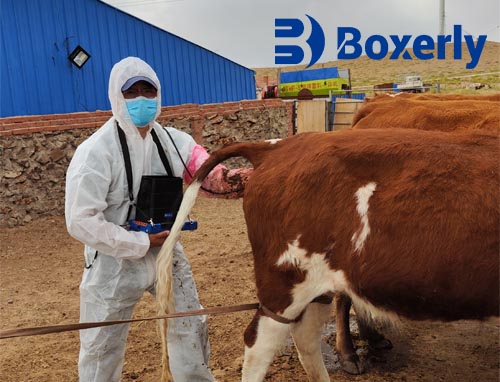According to the analysis of the B-ultrasound data of cows, the incidence of abortion in artificial insemination of dairy cows is about 10%, and the incidence of abortion in embryo transfer is about 15%. According to the age of abortion and the changes of the fetus, abortion can be divided into the following types:
Hidden abortion. Also known as early embryonic death, it occurs in the early 1-2 months of pregnancy, accounting for 25% of abortions. It is very important to use B-ultrasound in the early pregnancy of dairy cows. It is one of the tasks to prevent abortion to always use B-ultrasound in cows to grasp the early embryonic status.
Miscarriage. That is, the discharge of unchanged dead fetuses occurs in the middle and late pregnancy. This is the most common type of abortion, accounting for 49.8% of abortions. It is also necessary to use B-ultrasound in cows in the middle and late pregnancy. It is best to check the development of the fetus.
Dry fetus. After the fetus dies, it stays in the uterus. Due to the closure of the cervix, the water of the fetus is absorbed and mummified. The dead fetus often occurs in the 4th to 5th month of pregnancy, accounting for 24% of abortions. In this case, use B-ultrasound in cows to check the condition of the fetus in the uterus. If a dry fetus occurs, it should be treated in time.
Fetal maceration. After the fetus dies, due to the invasion of non-corrupt bacteria into the uterus, the soft tissue of the fetus is dissolved and lost, while the bones are retained in the uterus. The age of the dead fetus is similar to that of the dry fetus, accounting for 0.9% of the miscarriage. The echo structure of the residual tissue in the uterus can also be seen by B-ultrasound observation of cattle, which is similar to that of the dry fetus.
Fetal corruption. After the fetus dies, due to the invasion of putrefactive bacteria into the uterus, the fetus is corrupted and decomposed, and a large amount of gas is produced, which makes the fetus larger and causes dystocia. It is the most dangerous type of miscarriage, which is extremely rare in clinical practice, accounting for 0.3% of miscarriage. When the uterus of cattle is examined by B-ultrasound, many gas-strong echo structures can be seen in the uterus.








